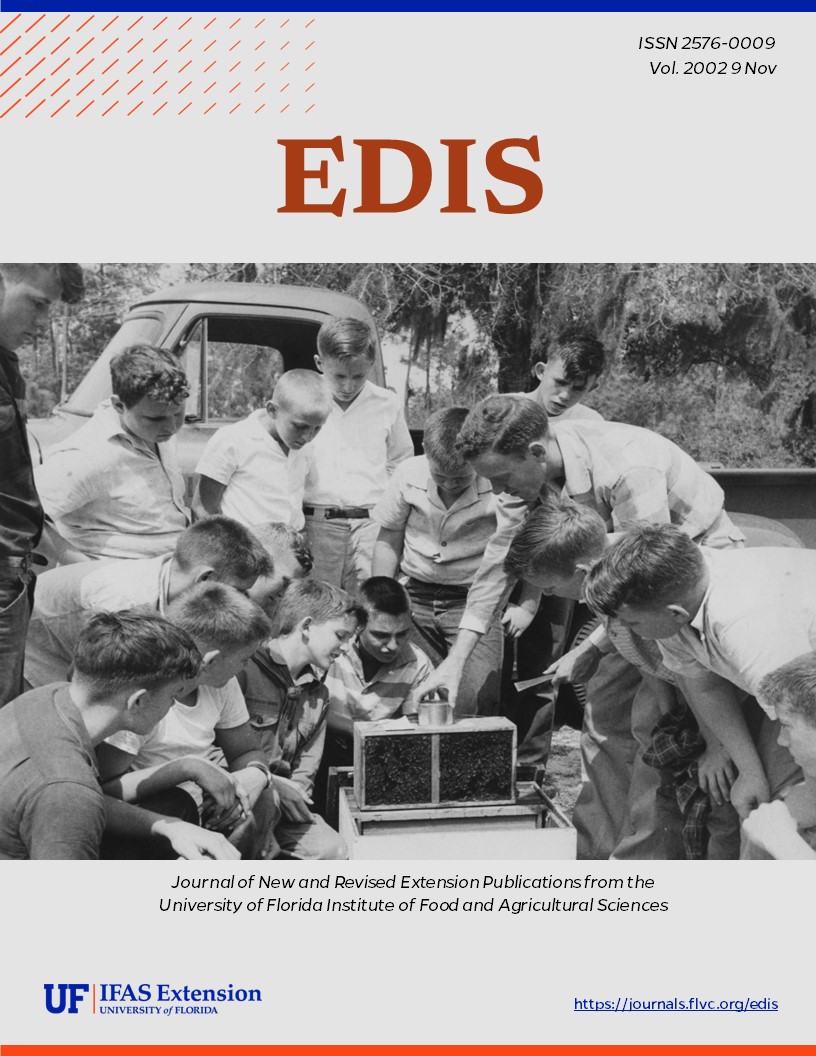Abstract
Prior to the advent of chlorinated hydrocarbons, organophosphates, and carbamates the little fire ant, Wasmannia auropunctata (Roger), was a problem in Florida. The use of persistent pesticide chemicals reduced the populations of the ants until they were no longer a menace. With the reduction in the use of these persistent pesticide chemicals populations of little fire ants have been allowed to increase, and in some areas, to develop into a serious problem. This document is EENY-139 (originally published as DPI Entomology Circular No. 248), one of a series of Featured Creatures from the Entomology and Nematology Department, Florida Cooperative Extension Service, Institute of Food and Agricultural Sciences, University of Florida. Published: June 2000.
https://edis.ifas.ufl.edu/in296
References
Bruneau de Mire, P. 1969. Une fourmi utilisee au Cameroun dans la lutte contre des mirides du cacaoyer Wasmannia auropunctata Roger. Café-Cacao-The. 13: 209-212.
Brown, W.L., Jr. 1948. The status of the genus Hercynia J. Enzmann. (Hymenoptera: Formicidae). Ent. News 59: 102.
Creighton, W.S. 1950. The ants of North America. Bull. Mus. Comp. Zool. 104: 1-585.
Enzmann, J. 1947. Hercynia, a new genus of myrmecine ants. J. New York Ent. Soc. 55: 43- 45.
Fernald, H.T. 1947. The little fire ant as a house pest. J. Econ. Ent. 40: 428. https://doi.org/10.1093/jee/40.3.428
Ferster, B., M. Deyrup, and R. Scheffrahn. 2000. The Pest Ants of Florida. Institute of Food and Agricultural Sciences, Gainesville, Florida.
Forel, A. 1893. Formicides de l'Antille. St. Vincent Recoltees par Monsieur H.H. Smith. Trans Ent. Soc. London 4: 333-418.
Hedges, S.A. 1998. Field Guide for the management of structure infesting ants, 2nd ed. G.I.E. Inc., Publishers, Cleveland, Ohio.
Koehler, P.G., D.E.Short and T.R. Fasulo. (1998). Pests In and Around the Home. UF/IFAS. SW-126. CD-ROM.
Roger, J. 1863. Die neu aufgefuhrten gattungen und arten meines Formiciden Verzeichnisses. Berl. Ent. Zeitschr. 7: 131-214. https://doi.org/10.1002/mmnd.47918630116
Smith, M.R. 1942. The relationship of ants and other organisms to certain scale insects on coffee in Puerto Rico. J. Agri. Univ. Puerto Rico. 26: 21-27. https://doi.org/10.46429/jaupr.v26i2.13583
Smith, M.R. 1965. House-infesting ants of the eastern United States. USDA-ARS Tech. Bull. No. 1326. 105p.
Spencer, H. 1941. The small fire ant Wasmannia in citrus groves: A preliminary report. Fla. Ent. 24: 6-14. https://doi.org/10.2307/3492285
Wheeler, W.M. 1929. Two neotropical ants established in the United States. Psyche 36: 89-90. https://doi.org/10.1155/1929/52591
Unless otherwise specified, articles published in the EDIS journal after January 1, 2024 are licensed under a Creative Commons Attribution-NonCommercial-NoDerivs 4.0 International (CC BY-NC-ND 4.0) license.

